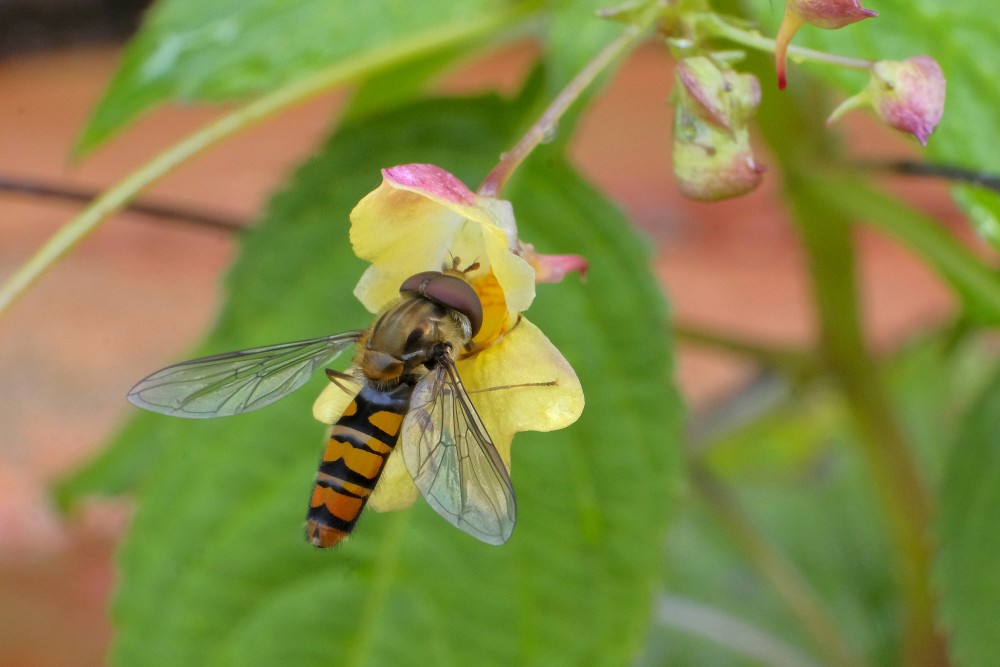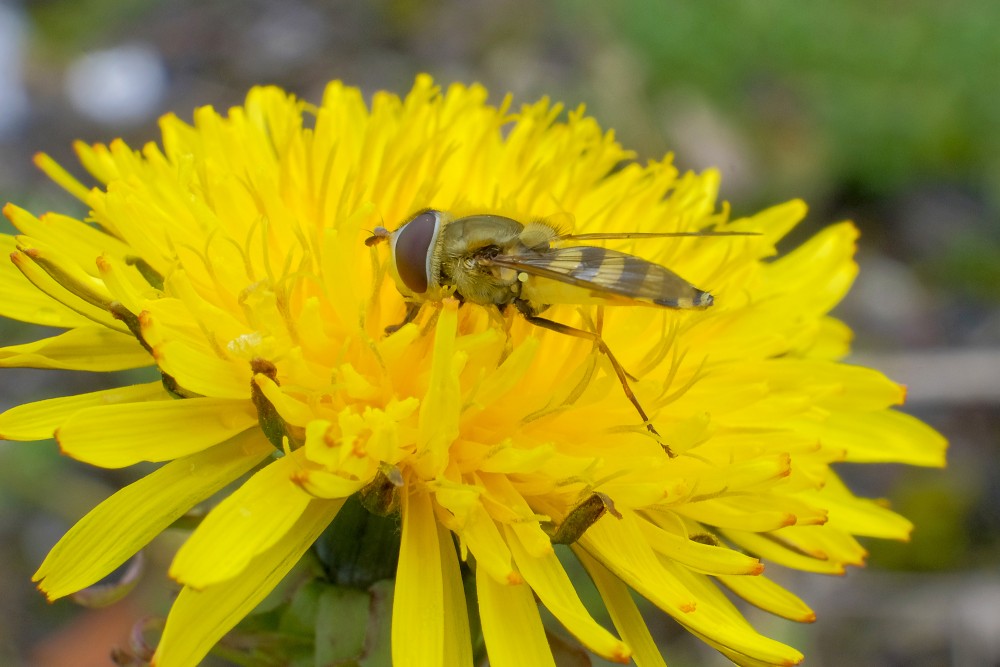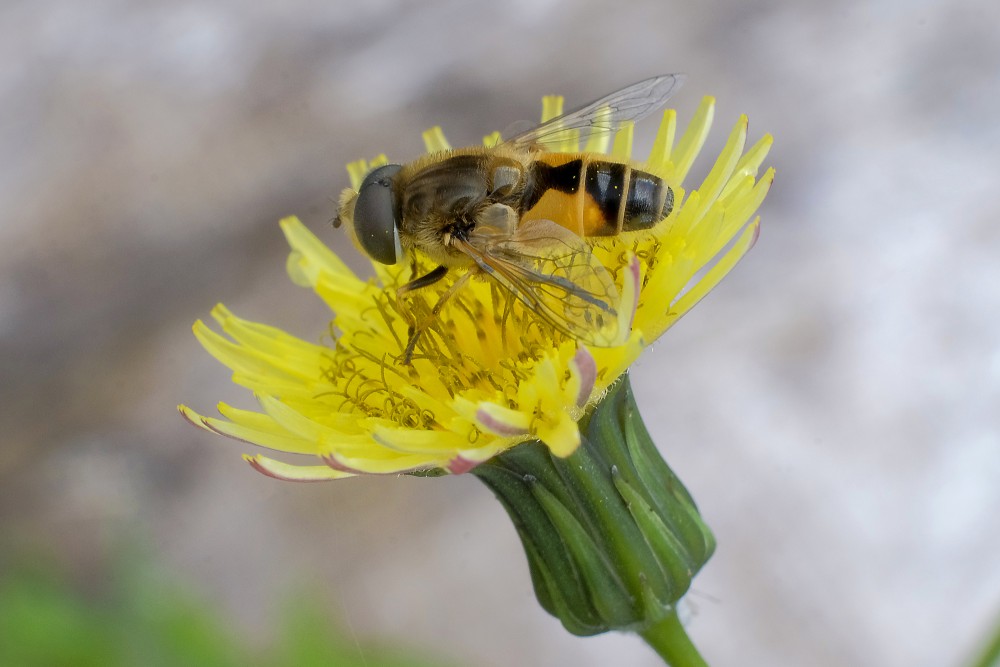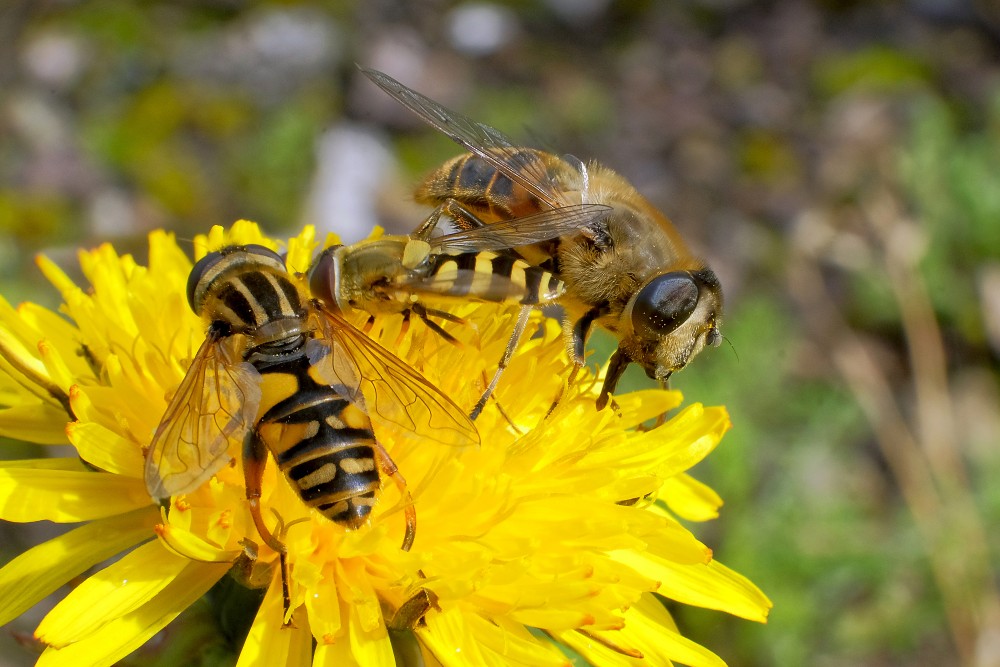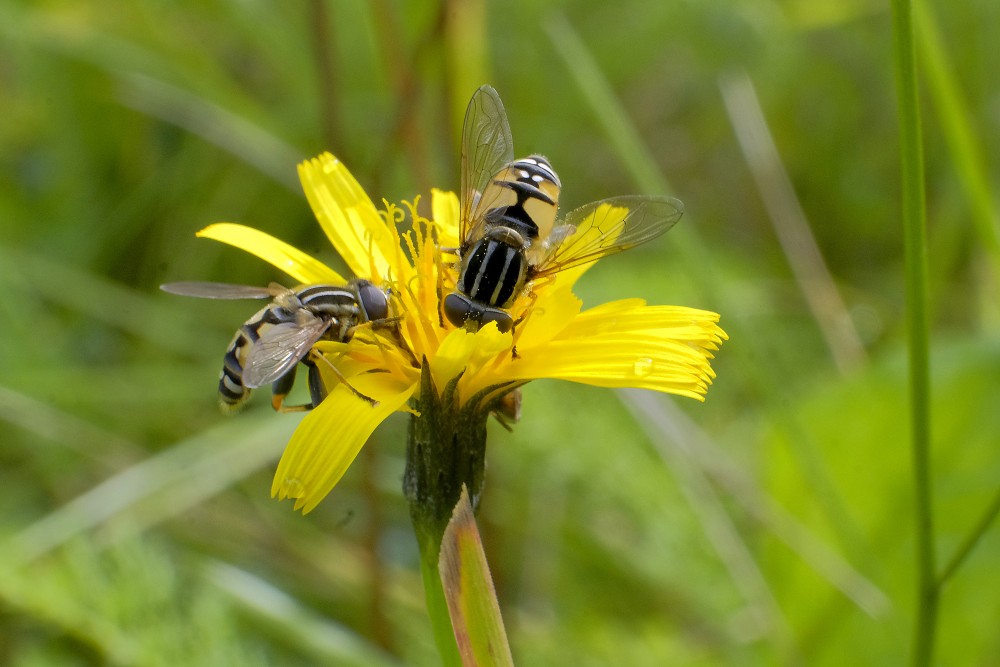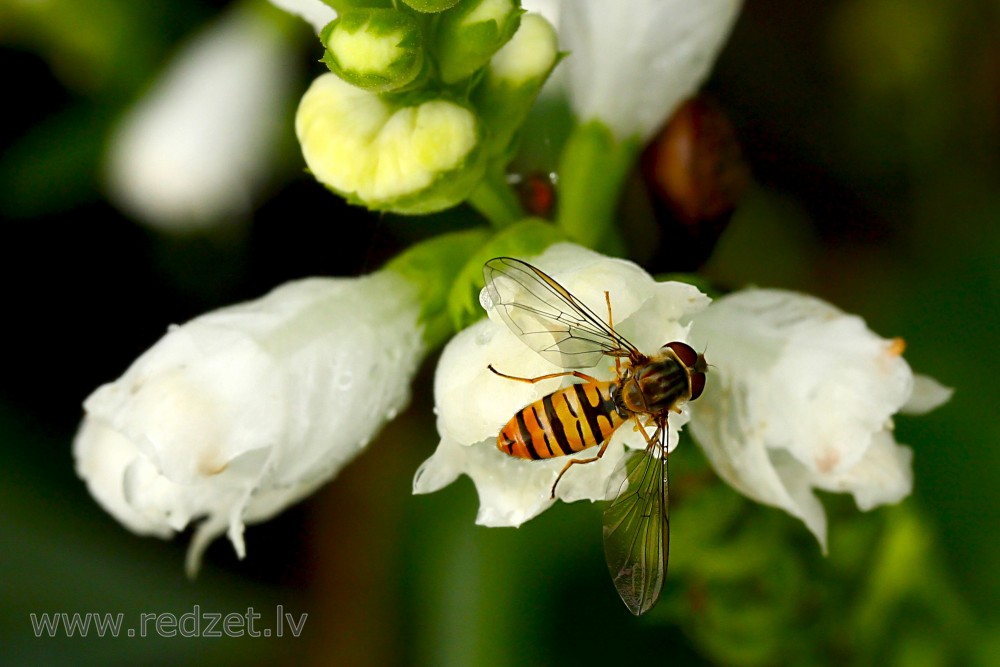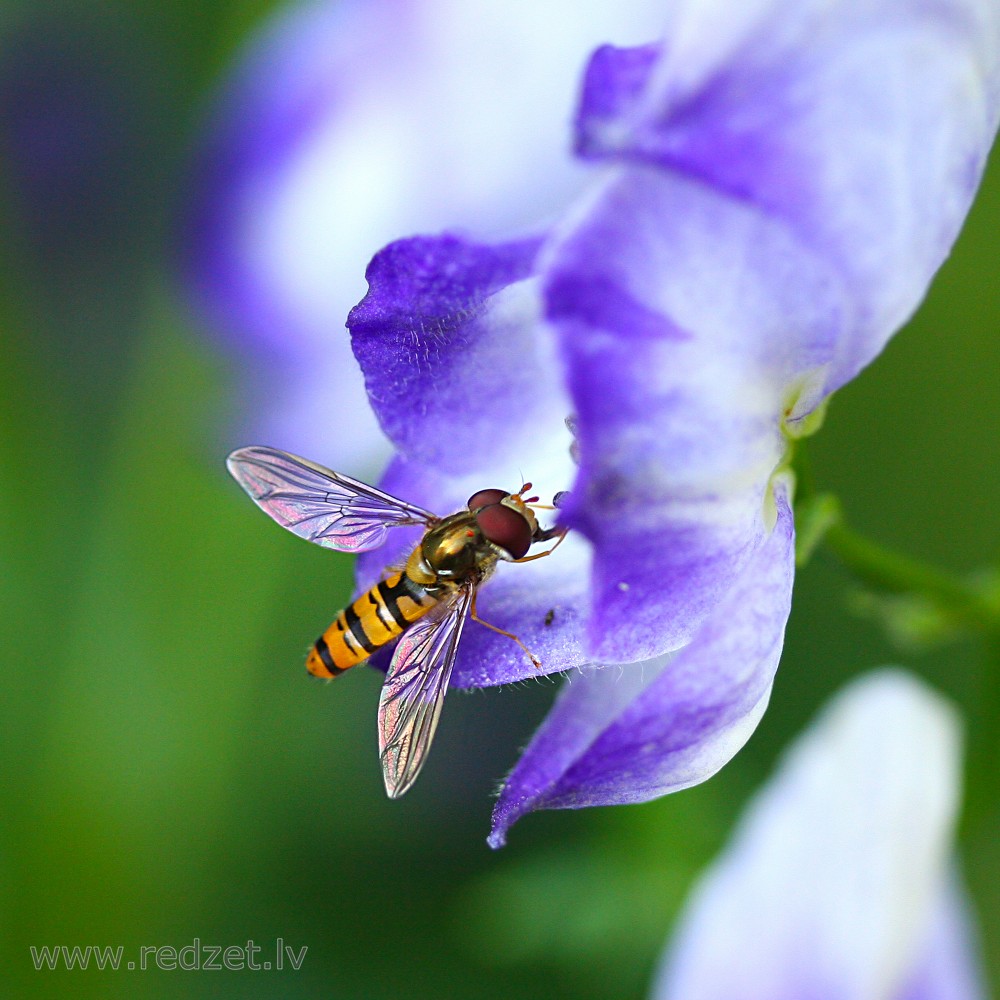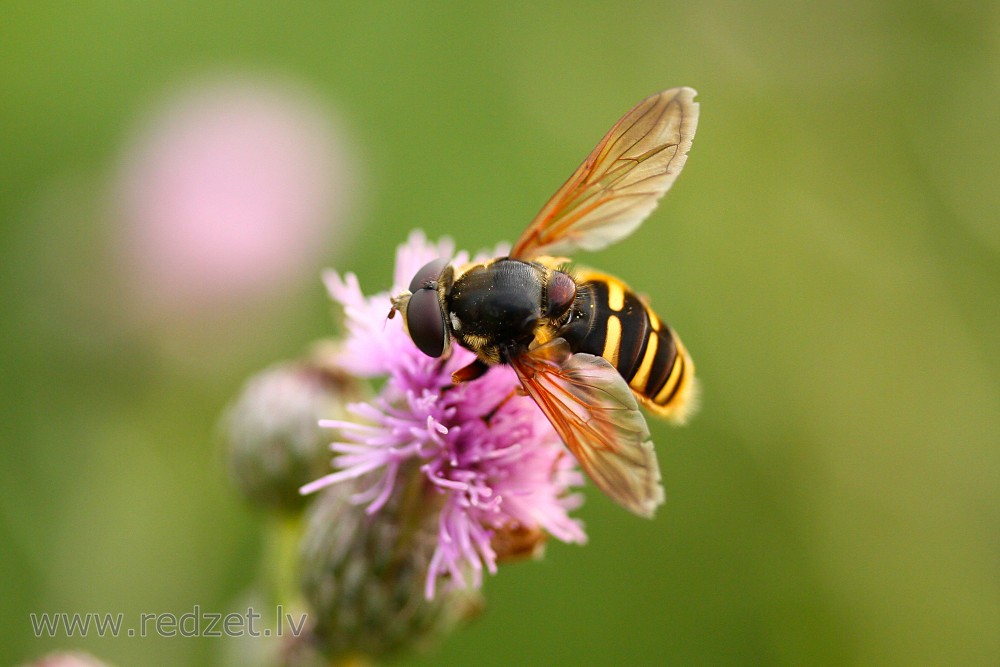Hoverflies (Syrphidae)
Hoverflies, sometimes called flower flies, or syrphid flies, make up the insect family Syrphidae. As their common name suggests, they are often seen hovering or nectaring at flowers; the adults of many speciesfeed mainly on nectar and pollen, while the larvae (maggots) eat a wide range of foods. In some species, the larvae are saprotrophs, eating decaying plant and animal matter in the soil or in ponds and streams. In other species, the larvae are insectivores and prey on aphids, thrips, and other plant-sucking insects.
Aphids alone cause tens of millions of dollars of damage to crops worldwide every year; because of this, aphid-eating hoverflies are being recognized as important natural enemies of pests, and potential agents for use in biological control. Some adult syrphid flies are important pollinators.
About 6,000 species in 200 genera have been described. Hoverflies are common throughout the world and can be found on all continents except Antarctica. Hoverflies are harmless to most other animals, despite their mimicry of more dangerous wasps and bees, which wards off predators.
Description
The size of hoverflies varies depending on the species. Some, like members of the genus Baccha, are small, elongated, and slender, while others, like members of Criorhina, are large, hairy, and yellow and black. As members of the Diptera, all hoverflies have a single functional pair of wings (the hind wings are reduced to balancing organs). They are brightly colored, with spots, stripes, and bands of yellow or brown covering their bodies. Due to this coloring, they are often mistaken for wasps or bees; they exhibit Batesian mimicry. Despite this, hoverflies are harmless.
With a few exceptions (e.g.), hoverflies are distinguished from other flies by a spurious vein, located parallel to the fourth longitudinal wing vein. Adults feed mainly on nectar and pollen. They also hover around flowers, lending to their common name.
Bee flies of the family Bombyliidae often mimic Hymenoptera and hover around flowers as well, rendering some bombyliid species hard to tell apart from Syrphidae at first glance. Hoverflies can nevertheless be distinguished in the field by anatomical features such as:
- The legs and mouthparts of hoverflies are usually not particularly long and thin (some bombyliids have a long and needle-like proboscis, many have legs that are noticeably longer and thinner than in similar sized syrphids)
- Their facial cuticle often has prominent bulges and/or beak- to knob-like projections (most bee flies have an evenly curved or sloping face)
- The wings are often clear or have smooth gradients of tinting, their veins merge posteriorly into a "false edge" that runs parallel to the wing's true rear edge and extends along half or more of the wing length (bombyliid wings lack a "false rear edge" and often have large dark areas with sharp boundaries, or complex patterns of spots)
- The abdomen and thorax often have glossy cuticular body surfaces, abdominal colors are usually mainly due to cuticular pigments (bee flies are usually very hairy, their abdominal colors are almost always due to pigmentation of hairs and not the underlying cuticle).
Reproduction and lifecycle
Unlike adults, the maggots of hoverflies feed on a variety of foods; some are saprotrophs, eating decaying plant or animal matter, while others are insectivores, eating aphids, thrips, and other plant-sucking insects. This is beneficial to gardens, as aphids destroy crops, and hoverfly maggots are often used in biological control. Certain species, such as Lampetia equestris or Eumerus tuberculatus, are responsible for pollination.
An example of a well-known hoverfly maggot is the rat-tailed maggot, of the drone fly, Eristalis tenax. It has a breathing siphon at its rear end, giving it its name. The species lives in stagnant water, such as sewage and lagoons. The maggots also have a commercial use, and are sometimes sold for ice fishing.
On occasion, hoverfly larvae have been known to cause accidental myiasis in humans. This occurs when the larvae are accidentally ingested on food or from other sources. Myiasis causes discomfort, pain, or itching; however, hoverflies do not normally prey upon humans and cases of myiasis from hoverflies are very rare.
en.wikipedia.org
https://en.wikipedia.org/wiki/Hoverfly
Continue reading